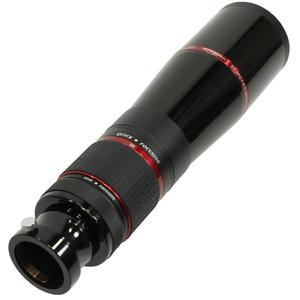Omegon Photo Scope
Spotting scope, telescope, and telephoto lens all in one, whilst at the same time compact and portable. So how does this miracle telescope shape up in practice?
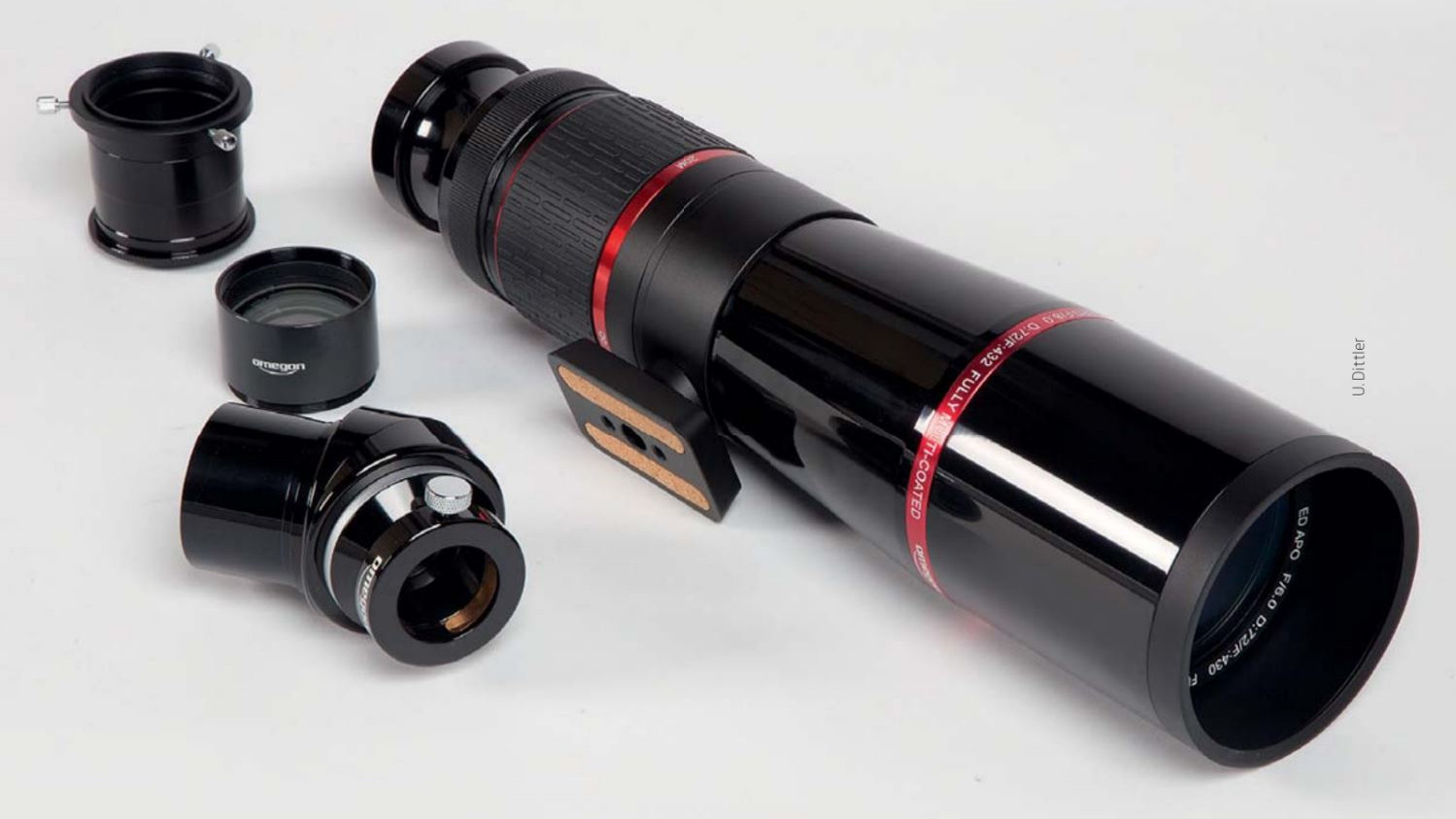 Review from Adventures in Astronomy EXTRA 1/ 2017, author: Ullrich Dittler
Review from Adventures in Astronomy EXTRA 1/ 2017, author: Ullrich DittlerReview of the Omegon Photography Scope 72/432 ED
Apochromatic refractors belong to the premier league of observation instruments. With the Photography Scope, Omegon offers a lens system that is serves as a spotting scope for daytime observation, a telescope for astronomy observation by night, and a telephoto lens for photography. Can the Omegon optics meet this wide range of requirements?
Even at first glance, it is clear that the Omegon Photography Scope apochromatic refractor is not a classic refractor. The optical system has a lens aperture of 72mm, a focal length of 432mm, and a focal ratio of f/6.0.
Inside the telescope is a multi-coated Doublet ED lens element, which is protected by a fixed dew shield that protrudes by just 25mm. The dew shield is made of metal, as is the entire tube and lens cap. The tube tapers slightly toward the rear end.
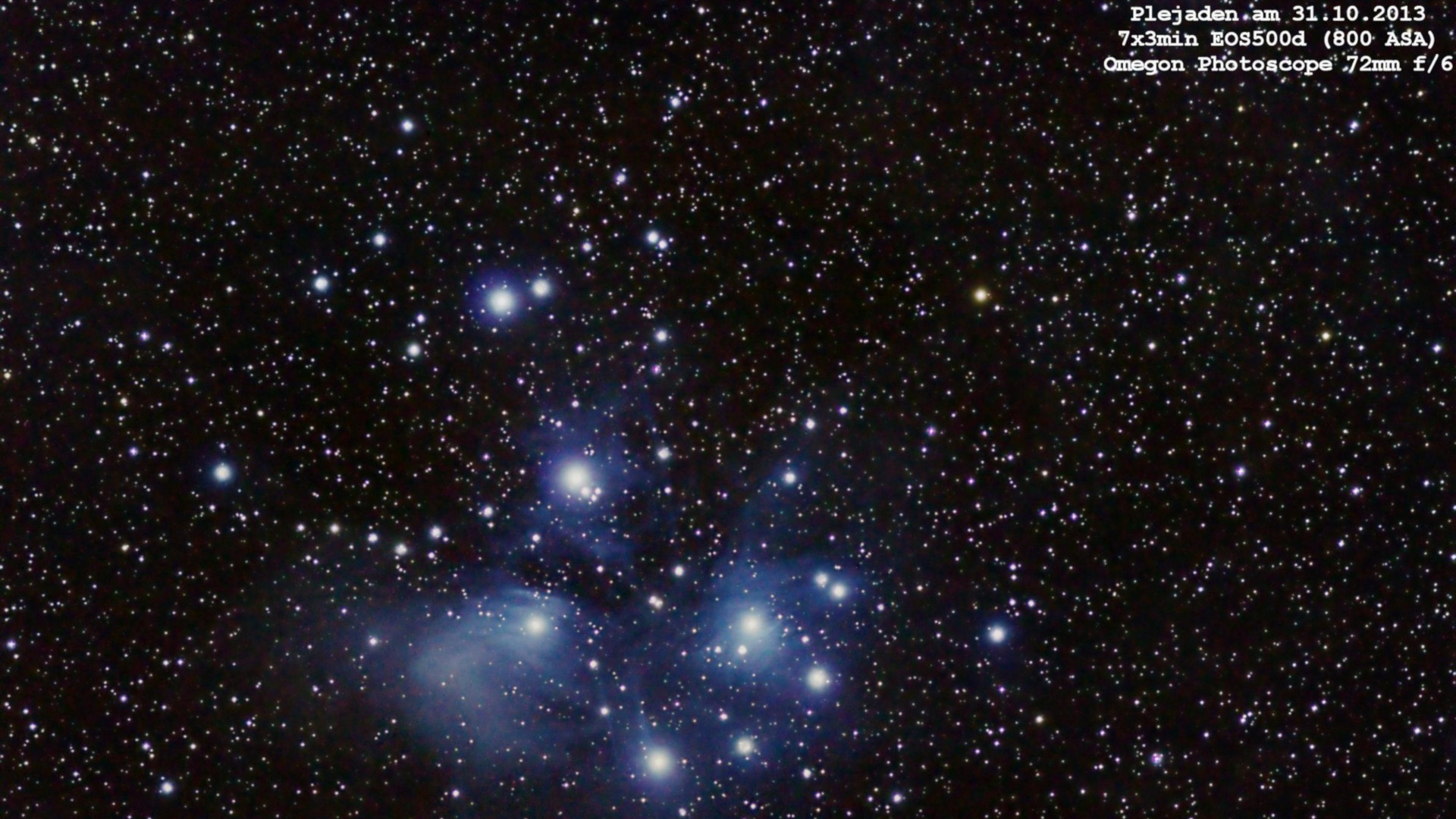
Well packaged
In the position where, on a normal refractor, you would usually expect to find a classic focuser, the Photography Scope 72/432 ED has an easy-to-use helical focuser: the focus can first be roughly set using the 50mm wide rubber-coated ring, followed by fine focussing using the narrow 15mm 1:10 focus ring. On the eyepiece side, the optical system has a 2-inch connector that sits on an SCT thread.
Due to the slight tapering of the tube and the two 75mm wide focus wheels, the tube cannot be easily mounted in tube rings – however the short mounting rail (7cm, Vixen-style) with two tripod threads offers the possibility of either attaching the telescope to a classic astronomy mount or to a conventional camera tripod.
For our test, the Photography Scope 72/432 ED arrived in a sturdy metal case together with an Amici prism with 45° angle view, which turns the optical system into a spotting scope for terrestrial observations. The Amici prism has a 1.25-inch connector for eyepieces, which are however not included in the scope of delivery. In addition, our test instrument came with a 2-inch field flattener and an extension sleeve (both also from Omegon), which allow the connection of a digital SLR camera via a T2 adapter.
Compelling both by day and night
The Photography Scope 72/432 ED is easy to set up for terrestrial observation: screw the telescope to an available tripod, insert the Amici prism and insert an available eyepiece. Anyone who, as an amateur astronomer, only has eyepieces with fixed focal length will stumble upon an – albeit solvable – problem: observing with spotting scopes is comfortable because they often come equipped with zoom eyepieces and thus the magnification can be precisely adjusted to suit the object being observed. This advantage of course does not apply when using fixed focal length astronomy eyepieces – but Omegon also offers zoom eyepieces as an option. The image achieved with terrestrial observation is impressive.
The system delivers a sharp and high-contrast image over various magnifications and the focus can also be set quickly using the two focus rings, as they can be easily identified by touch. Using the Photography Scope 72/432 ED for night-time and astronomy observations is also possible in just a few simple steps: the (right) short Vixen rail allows the telescope to be attached to an available mount.
The zenith prism and eyepiece are also quickly attached. As it is not possible to connect a finderscope to the Photography Scope 72/432 ED, the easiest way to find objects to be observed is by using a GoTo mount or by star hopping with low-magnification eyepieces. The finders common with some spotting scopes are also not included.
The positive impression gained from daytime observation continues to the night-time when we tested the instrument by taking a stroll along the Milky Way with a long focal length eyepiece: the optical system was able to depict the large differences in contrast between bright stars and their dark surroundings in a finely structured way and without colour fringing. As a telephoto lens, the Photography Scope 72/432 ED can be connected to a standard DSLR camera using a flattener, a spacer sleeve, and a T2 adapter. With a focal length of 432mm, hand-held photography is not possible, so the lens-camera combination should be mounted on a stable camera tripod.
Rough focusing can be done easily and quickly using the viewfinder image, for fine focusing it is advisable to use the camera's enlarged LiveView display. For photography, the Photography Scope 72/432 ED, together with the Omegon Flattener, demonstrates that the illuminated field of view is fortunately large enough to also use full-frame cameras with this telescope.
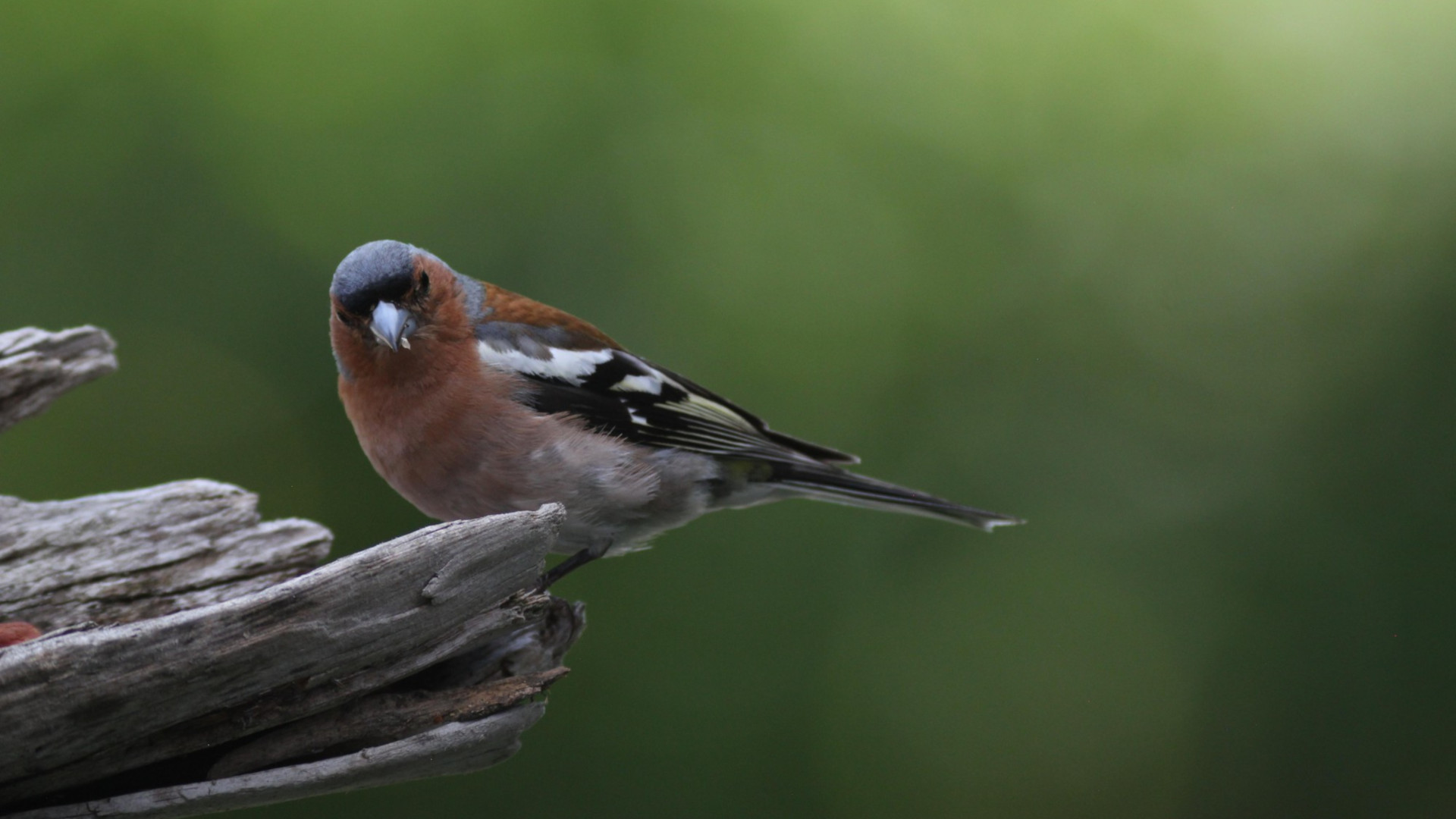 Chaffinch, taken with the Photography Scope, Image: Marcus Schenk
Chaffinch, taken with the Photography Scope, Image: Marcus SchenkThe bottom line
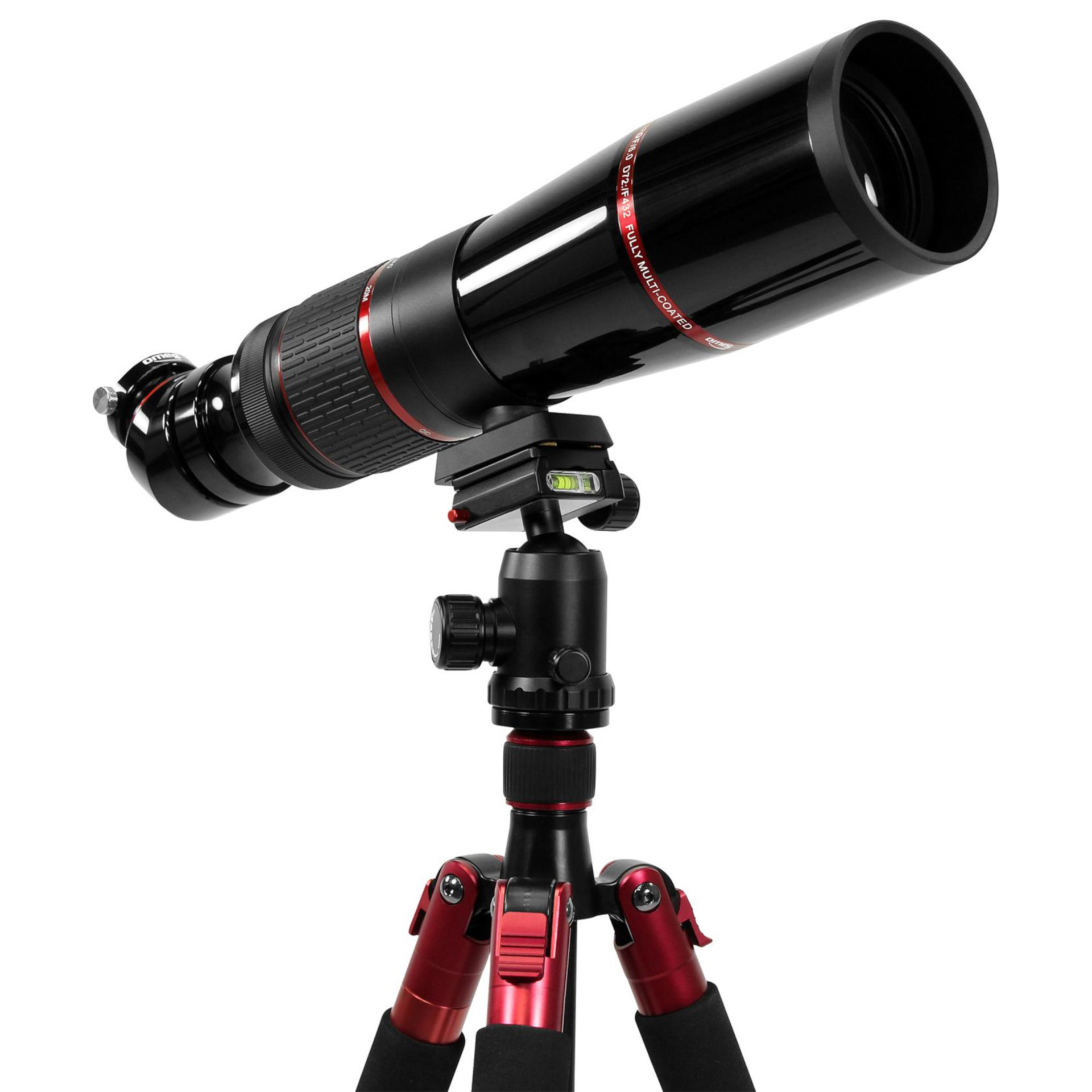
The Photography Scope 72/432 ED is a successful combination of spotting scope, telescope, and telephoto lens. Due to its compact design, it could easily be used as a travel telescope. In addition to the optical performance of the system, the high-quality design is also impressive; the only downside being that the short Vixen rail and its fixed mounting make it difficult to balance when using heavier accessories or a heavier camera.

